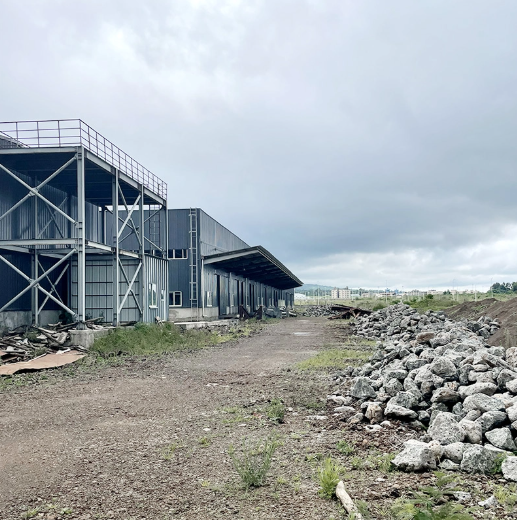
The term steel hangar is widely used in the construction industry, particularly in sectors related to aviation and storage facilities. But what precisely defines a steel hangar, and why has steel become the material of choice for these structures? This article delves into the historical evolution, structural advantages, and the multifaceted applications of steel hangars to elucidate why they bear this specific nomenclature.
The Evolution of Hangar Construction
Early Hangars: From Wood to Fabric
In the early 20th century, the burgeoning aviation industry necessitated the development of specialized structures to house aircraft. Initially, hangars were constructed using readily available materials such as wood and canvas. These early hangars served their basic purpose but were plagued by limitations in durability and resistance to environmental factors. Wooden structures were susceptible to rot and termite damage, while fabric coverings offered minimal protection against harsh weather conditions.
The Advent of Steel Structures
The industrial revolution and advancements in metallurgy ushered in a new era of construction materials. Steel emerged as a superior alternative owing to its exceptional strength-to-weight ratio and durability. By the mid-20th century, steel had become the predominant material for constructing hangars, facilitating larger spans and greater structural integrity. This transition marked the genesis of what we now refer to as steel hangars.
Characteristics of Steel Hangars
Durability and Strength
Steel hangars are renowned for their robustness. The inherent properties of steel confer resistance to environmental stresses such as wind, snow, and seismic activity. For instance, steel's high tensile strength allows for the design of expansive, column-free interiors—a critical feature for accommodating large aircraft or sizable equipment. According to the American Institute of Steel Construction, steel structures can withstand loads up to 50,000 pounds per square inch, showcasing their exceptional capacity for heavy-duty applications.
Versatility and Adaptability
The modular nature of steel components allows for significant flexibility in design. Steel hangars can be customized to meet specific dimensional requirements, incorporate unique architectural features, and be easily expanded or modified in the future. This adaptability is particularly advantageous in industries where needs evolve rapidly, such as aerospace, manufacturing, and logistics.
Advantages of Steel Hangars Over Other Materials
Cost Efficiency
While the initial investment in steel may be higher compared to materials like wood, the long-term cost benefits are substantial. Steel hangars offer reduced maintenance expenses due to their resistance to corrosion and pests. Moreover, the prefabrication of steel components accelerates construction timelines, resulting in labor cost savings. A study by the Steel Construction Institute indicates that steel structures can be erected 50% faster than traditional building methods.
Environmental Impact
Steel is one of the most recycled materials globally, with a recycling rate exceeding 80%. Utilizing recycled steel in hangar construction reduces the demand for raw materials and minimizes the carbon footprint. Additionally, steel structures are energy-efficient, offering superior insulation capabilities when combined with modern insulating materials, thus reducing energy consumption for heating and cooling.
Applications of Steel Hangars
Aviation Industry
In aviation, the term steel hangar is synonymous with aircraft storage and maintenance facilities. The expansive spaces afforded by steel construction accommodate large aircraft and provide the necessary environment for intricate maintenance tasks. For example, the Boeing Everett Factory, one of the largest buildings in the world by volume, utilizes steel framing to enclose an area of over 13 million cubic meters.
Industrial and Commercial Use
Beyond aviation, steel hangars serve a myriad of industrial and commercial purposes. They function as warehouses, manufacturing plants, and distribution centers. The agricultural sector employs steel hangars for equipment storage and as shelters for livestock. Their quick assembly and dismantling make them ideal for temporary structures at mining sites and large-scale events.
![Steel Hangar Steel Hangar]()
Case Study: Beijing Prefab Steel Structure Co., Ltd.
Established in 2012, Beijing Prefab Steel Structure Co., Ltd. exemplifies the modern advancements in steel hangar construction. Headquartered in Beijing with a sprawling production workshop in Shandong Province, the company specializes in fabricating high-quality steel structures. The facility covers over 34,000 square meters, including 21,000 square meters of workshop space equipped with five fabrication lines for prefab steel structures and three production lines for PUR and PIR sandwich panels.
With a workforce of over 200 employees, the company boasts a monthly production capacity exceeding 2,000 tons. Its state-of-the-art machinery includes CNC cutting machines, high-power laser cutting machines, H-beam assembling machines, gantry welding machines, and advanced blasting and de-rusting equipment. The heavy steel structure workshop spans over 10,000 square meters with an eave height of 15 meters and is equipped with double-beam overhead cranes capable of lifting up to 32 tons.
This extensive infrastructure enables Beijing Prefab Steel Structure Co., Ltd. to meet diverse fabrication needs for various steel components. The company's commitment to integrity, high-quality products, and excellent after-sales service has garnered trust and support from customers domestically and internationally. Their products are distributed across Asia, Europe, Africa, and beyond, and they have established long-term strategic partnerships with major state-owned enterprises such as CREC, CCCC, CNCCC, and CSCES.
Through continuous improvement and innovation, the company contributes significantly to the development of prefabricated buildings, reinforcing the importance and utility of steel hangars in the modern construction landscape.
Conclusion
The designation "steel hangar" encapsulates the material's pivotal role in the construction of these versatile structures. Steel's unparalleled strength, durability, and adaptability make it the material of choice for hangars that serve critical functions across various industries. From the early days of aviation to contemporary applications in industrial and commercial sectors, steel hangars have evolved to meet the growing demands of modern infrastructure.
By understanding the reasons behind the nomenclature and the advantages that steel offers, stakeholders can make informed decisions when investing in such structures. Companies like Beijing Prefab Steel Structure Co., Ltd. continue to push the boundaries of steel hangar construction, demonstrating the material's enduring relevance and potential for innovation. As industries progress and requirements become more complex, the reliance on robust solutions like steel hangars is poised to grow, solidifying their importance in the architectural and industrial domains.







